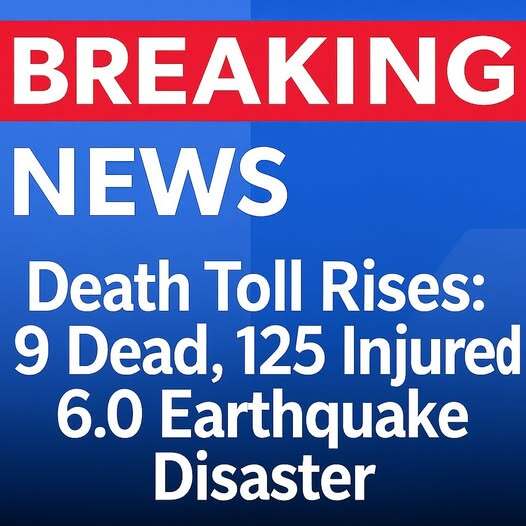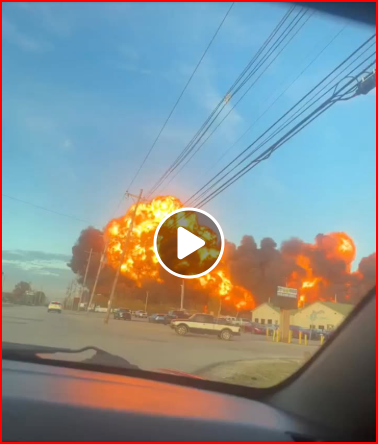Afghanistan was shaken to its core this week when a powerful 6.0-magnitude earthquake struck, jolting vast swathes of the country and sending shockwaves of panic through communities already burdened by hardship. The initial tremor, recorded by international seismic monitoring agencies, was followed within hours by a significant aftershock measuring 4.5. The secondary quake, though smaller, compounded the anxiety of millions and left residents fearful that more destructive tremors could follow in the days ahead.
A Nation Shaken
The earthquake hit without warning, rattling homes across multiple provinces. Residents described violent shaking that cracked walls, sent household items crashing to the floor, and forced families to flee their homes in the dead of night. Entire neighborhoods poured into the streets, where men, women, and children clung to one another in fear, reciting prayers and waiting desperately for the ground to still.
“The whole house shook like it was made of paper,” recalled one resident from eastern Afghanistan. “I grabbed my children and ran outside. We thought the roof would collapse on us.”
In countless towns and villages, families remained outdoors long after the tremors subsided. Many refused to re-enter their homes, fearing weakened structures might not withstand further shocks. Reports surfaced of families camping in open fields and empty lots overnight, wrapped in blankets against the cold, too terrified to sleep beneath their own roofs.
Emergency Response Under Pressure
Afghan emergency teams were quickly mobilized to assess the scale of the damage. However, initial reports have been slow to arrive. Communication lines remain disrupted in several regions, and poor infrastructure is hindering coordination of rescue and relief operations. Hospitals in affected provinces were placed on high alert, preparing to treat injuries ranging from fractures caused by falling debris to trauma inflicted during stampedes as people rushed to safety.
Aid organizations, both local and international, are monitoring the situation closely. Afghanistan’s fragile healthcare and emergency systems leave little buffer for large-scale disasters, and humanitarian workers warn that even moderate earthquakes can have devastating consequences in a country where many buildings are not built to withstand strong seismic activity.
Scenes of Panic and Humanity
Eyewitness accounts paint a vivid picture of the fear that gripped communities during and after the quake. Videos circulating on social media show frightened crowds huddled together in public squares and open fields, many holding lanterns and flashlights as they awaited news. Children wept in their parents’ arms, while elders recited verses of prayer. Amid the chaos, neighbors were seen comforting one another, offering water, blankets, and words of reassurance.
“The shaking lasted less than a minute, but it felt like forever,” one eyewitness said. “All I could think about was whether we would survive.”
A Country at Risk
Afghanistan sits in one of the world’s most seismically active regions, perched on the complex network of tectonic fault lines that stretch across Central and South Asia. The rugged, mountainous terrain makes the country particularly vulnerable, as landslides triggered by earthquakes can devastate remote villages, cutting them off from aid for days.
The country has endured some of the deadliest quakes in recent decades. In 2015, a 7.5-magnitude tremor struck northern Afghanistan and Pakistan, killing hundreds and injuring thousands more. In 2022, another powerful earthquake in the southeast left entire villages flattened, with death tolls surpassing 1,000. For many Afghans, the latest quake is a painful reminder of these tragedies, and of how unprepared the nation remains for disasters of this scale.
Timing Could Not Be Worse
The earthquake struck at a time of ongoing crisis in Afghanistan. Economic collapse, shortages of food and medicine, and strained healthcare systems have left millions vulnerable even before this disaster. International sanctions and political isolation have slowed aid deliveries, and humanitarian agencies now warn that any large-scale damage could overwhelm already limited resources.
“This earthquake is yet another blow to a population already under enormous strain,” said a spokesperson for an international relief agency. “We are deeply concerned about the potential for casualties and displacement in areas that are already facing acute humanitarian needs.”
The Threat of Aftershocks
Authorities are urging citizens to remain vigilant in the coming days. Aftershocks, though typically weaker than the main quake, are common and can be deadly if they strike structures already compromised. Engineers warn that many homes in rural areas, often built with mud brick, are particularly susceptible to collapse after repeated shaking.
Residents have been advised to avoid re-entering visibly damaged buildings, to keep emergency supplies at hand, and to identify safe gathering places in case of further tremors. Disaster preparedness campaigns, long overlooked, are expected to be emphasized in the days ahead, though experts stress that years of underinvestment make widespread readiness a challenge.
A Community Tested Once Again
For ordinary Afghans, the earthquake is yet another test of resilience in a long history of hardship. Families who had little to begin with are now faced with repairing damaged homes, rebuilding shattered lives, and enduring sleepless nights under the shadow of uncertainty. Yet amid the fear, there are also stories of solidarity—neighbors watching out for one another, communities pooling scarce resources, and strangers offering comfort in a time of collective fear.
As Afghanistan waits to learn the full scale of the earthquake’s toll, the nation finds itself once again confronting the fragility of life in a land marked by both beauty and danger. For millions shaken awake in the early hours of the morning, the memory of the ground shifting beneath their feet will linger long after the tremors fade.



